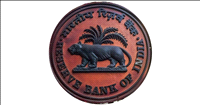The union cabinet, chaired by Prime Minister Narendra Modi, on Wednesday approved the National Medical Devices Policy, 2023, which is expected to help the medical devices sector in India to grow from the present $11 billion to $50 billion by 2030.
The medical devices sector in India is an essential and integral constituent of the Indian healthcare sector and a sunrise sector which is growing at a fast pace. The market size of the medical devices sector in India is estimated to be $11 billion (approximately Rs90,000 crore) in 2020 and its share in the global medical device market is estimated to be 1.5 per cent.
The Indian medical devices sector is on a growth track and has an enormous potential to become self-reliant and to contribute towards the goal of universal health care. The medical devices sector’s contribution has become even more prominent as India supported the domestic and global battle against Covid-19 pandemic through the large scale production of medical devices and diagnostic kits, such as ventilators, rapid antigen test kits, real-time reverse transcription polymerase chain reaction (RT-PCR) kits, infrared (IR) thermometers, personal protective equipment(PPE) kits and N-95 masks.
Government of India has already initiated implementation of PLI scheme for medical devices and support for setting up of four medical devices parks in the states of Himachal Pradesh, Madhya Pradesh, Tamil Nadu and Uttar Pradesh. Under the PLI scheme for medical devices, till now, a total of 26 projects have been approved, with a committed investment of Rs1,206 crore and out of this, so far, an investment of Rs714 crore has been achieved.
Under the PLI scheme, total of 14 projects producing 37 products have been commissioned and domestic manufacturing of high-end medical devices, which include Linear Accelerator, MRI Scan, CT-Scan, Mammogram, C-Arm, MRI Coils, high-end X-ray tubes etc has started. Remaining 12 products will be commissioned in near future. Five projects out of total 26 projects, under Category B, have recently been approved, for domestic manufacturing of 87 products / product components.
Building upon these measures, a holistic policy framework to accelerate this growth and fulfil the potential of the sector is the need of the hour. While various departments of the government have undertaken programmatic interventions to encourage the sector, the current policy aims to put in place a comprehensive set of focus areas for growth of the sector in a coordinated manner. Secondly, in view of the diversity and multi-disciplinary nature of the sector, the regulations, skilling trade promotion of medical device industry are spread over several government departments, both at the centre and state levels. There is a need to bring together the range of interventions in a coherent manner that would facilitate focused and efficient support and facilitation for the sector by the respective agencies, says a release issued by the ministry of chemicals and fertilizers.
The National Medical Devices Policy, 2023 is expected to facilitate an orderly growth of the medical device sector to meet the public health objectives of access, affordability, quality and innovation. This sector is expected to realise its full potential with the strategies, viz, building an enabling ecosystem for manufacturing along with a focus on innovation, creating a robust and streamlined regulatory framework, providing support in training and capacity building programmes and promoting higher education to foster talent and skilled resources in line with the industry requirements. Encouraging domestic investments and production of medical devices complements the government’s ‘Atmanirbhar Bharat’ and ‘Make in India’ programmes.
Salient features of National Medical Devices Policy, 2023:
Vision: Accelerated growth path with a patient-centric approach and to emerge as the global leader in the manufacturing and innovation of medical devices by achieving 10-12 per cent share in the expanding global market over the next 25 years. Policy is expected to help the medical devices sector grow from the present $11 billion to $50 billion by 2030.
Mission: Policy lays down a roadmap for accelerated growth of the medical devices sector to achieve the following missions, viz, Access and Universality, Affordability, Quality, Patient Centred and Quality Care, Preventive and Promotive Health, Security, Research and Innovation and Skilled manpower.
Promotional Strategies: Medical devices sector will be facilitated and guided through a set of strategies that will cover six broad areas of policy interventions:
Regulatory streamlining: In order to enhance ease of doing research and business and further to balance patient safety with product innovation measures such as creation of a Single Window Clearance System' for Licensing of Medical Devices, coopting all the stakeholder departments / organisations such as AERB, MeitY, DAHD, etc, enhancing the role of Indian Standards like BIS and designing a coherent pricing regulation, will be followed.
Enabling Infrastructure: The establishment and strengthening of large medical device parks, clusters equipped with world class common infrastructure facilities in proximity to economic zones with requisite logistics connectivity as envisioned under the National Industrial Corridor Programme and the proposed National Logistics Policy 2021 under the ambit of PM Gati Shakti, would be pursued with the state governments and industry for better convergence and backward integration with medical device industry.
Facilitating R&D and Innovation: The policy envisages promotion of Research and Development in India, complementing the department’s proposed National Policy on R&D and Innovation in the Pharma- MedTech Sector in India. It also aims at establishing centres of excellence in academic and research institutions, innovation hubs, ‘plug and play’ infrastructures and support to start-ups.
Attracting Investments: Along with resent schemes and interventions like Make in India, Ayushman Bharat program, Heal-in-India, Start-up mission, the policy encourages private investments, funding from venture capitalists, and also public-private partnership (PPP).
Human Resources Development: In order to have a steady supply of skilled work force across the value chain such as scientists, regulators, health experts, managers, technicians, etc, the policy envisages:
· Leveraging available resources of the ministry of skill development and entrepreneurship for skilling, reskilling and upskilling of professionals in the medical device sector;
· The policy will support dedicated multidisciplinary courses for medical devices in existing institutions to ensure availability of skilled manpower for futuristic medical technologies, high-end manufacturing and research, to produce future-ready MedTech human resources and to meet the evolving needs of the sector; and
· Developing partnerships with foreign academic/industry organisations to develop medical technologies in order to be in equal pace with the world market.
Brand Positioning and Awareness Creation: The policy envisages the creation of a dedicated Export Promotion Council for the sector under the department which will be an enabler to deal with various market access issues;
Initiate studies and projects for learning from best global practices of manufacturing and skilling system so as to explore the feasibility of adapting such successful models in India; and
Promote more forums to bring together various stakeholders for sharing knowledge and build strong networks across the sector;
The policy is expected to provide the required support and directions to strengthen the medical devices industry into a competitive, self-reliant, resilient and innovative industry that caters to the healthcare needs of not only India but also of the world. The National Medical Devices Policy, 2023 aims to place the medical devices sector on an accelerated path of growth with a patient-centric approach to meet the evolving healthcare needs of patients, says the release.






























